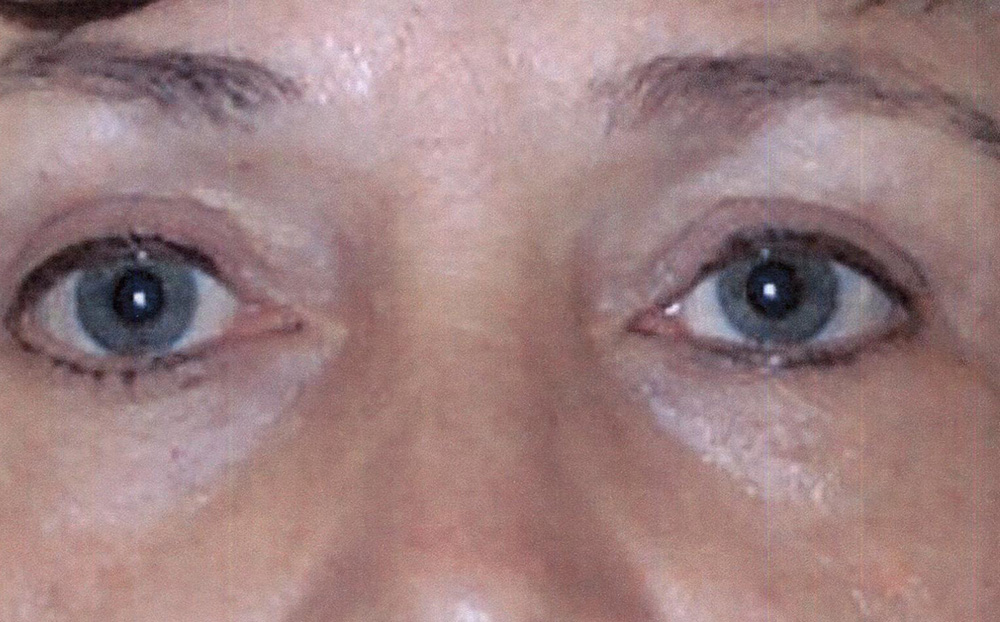Eyelid Disorders
Types of Eyelid Disorders
General Information
Having an eyelid problem may affect your vision, your appearance or cause discomfort and even pain. These problems include excess upper eyelid skin (dermatochalasis), a droopy upper eyelid (ptosis), or eyelids that turn inward (entropion) or eyelids that roll outward (ectropion). Some patients have eyelid lesions or growths that can be benign or cancerous. These conditions can be diagnosed and treated in the office by Dr. Gleason and Dr. Janky.
Eyelid Lesions
Dr. Gleason and Dr. Janky are very experienced at removing a wide variety of eyelid lesions.
Chalazion is a plugged oil gland that usually starts as a tender, red lump that appears under the skin in the eyelid. Sometimes it can enlarge and even cause the entire eyelid to swell. The first treatment should be warm compresses held on for 5 minutes and used 4 times a day. In most cases this will help the gland to drain on its own. If it does not respond to the warm compresses after a couple of weeks, surgical drainage may be indicated.
Lesions of the skin of the eyelids may be benign or cancerous. The majority are benign like skin tags, hidrocystomas, and seborrheic keratosis. It is not always possible to tell if a lesion is cancerous by looking at it. If there is any question, Dr. Gleason and Dr. Janky will perform a biopsy first and then, if cancerous, a frozen section in conjunction with the pathologists at St. Francis Hospital to ensure it is removed in its entirety.
Dermatochalasis
Eyelid skin is thin and tends to stretch over time. Sometimes the upper eyelid skin stretches too much causing excess eyelid skin that droops down on the eyelids. If it stretches enough to droop on your eyelashes and limit your side vision, surgical removal may be covered by insurance. A blepharoplasty may also be done for cosmetic purposes but would not be covered by insurance.
When the lower eyelid skin stretches you may form ‘bags’ under your eyelids. It is considered ‘cosmetic’ and coverage would be an out-of-pocket expense.
Blepharoplasty helps make the area around the eye and lid look more clearly defined and also makes the eyes appear less tired and more alert in addition to improving side vision. These procedures may be done in the office.
Before and After Blepharoplasty Eye Surgery
Click on any image to view a larger version of the photos in a lightbox.
Ptosis
Ptosis is when one or both of your upper eyelids droop because of a slipped or stretched or weak muscle. It can limit both your side vision and your central vision, especially when reading. If you have ptosis on only one eye, your face may look uneven. If both eyelids droop you may look tired.
Some children are born with ptosis which may cause problems with vision development in the affected eye. Most cases of ptosis develop later in adult life. During the surgery to correct ptosis, Dr. Gleason tightens the upper eyelid muscle that lifts the lid. This helps lift the droopy lid, improving vision as well as the eye’s appearance. This surgery may be done in the office.
Before and After Ptosis Eye Surgery
Ectropion & Entropion
When the lower eyelid droops down and turns outward, it is called ectropion. This can occur due to age, skin disease and scarring from trauma or burns. Ectropion can make your eyes dry, watery and sensitive to light and wind.
If the eyelid turns in toward the eyeball it is called entropion. This condition usually develops due to age but can also develop due to scarring. When the eyelid rolls inward, the lashes and skin rub on the eye causing the eye to be irritated, red, and watery. If it is not treated, entropion can lead to an ulcer or infection on the cornea (the clear window on the front of the eye).
Surgery for ectropion and entropion returns the eyelid to its normal position, thus reducing the irritating symptoms and better protecting your eye. This surgery may be done in the office.





















